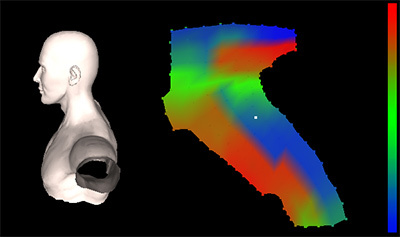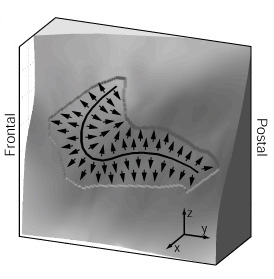 |
Using the static displacements and the on-directions of otolith haircells, we can now quickly determine otolith excitation patterns for arbitary movements. These data are used for the Simulations of head-neck mechanics (LOTO-Tuebingen), to obtain realistic innervation signals for the neck muscles. An interactive visualization program provides an anatomically accurate display of the otoliths, and the excitation patterns on the otolith membrane. The figure on the left shows an upright person, and the simulated neural activity on the saccule, for the stationary case. |
Using experimental recordings of 3-dimensional translations and rotations during natural movements (LOTO Pavia), we now analyze the otolith excitation patterns caused by natural movements.






